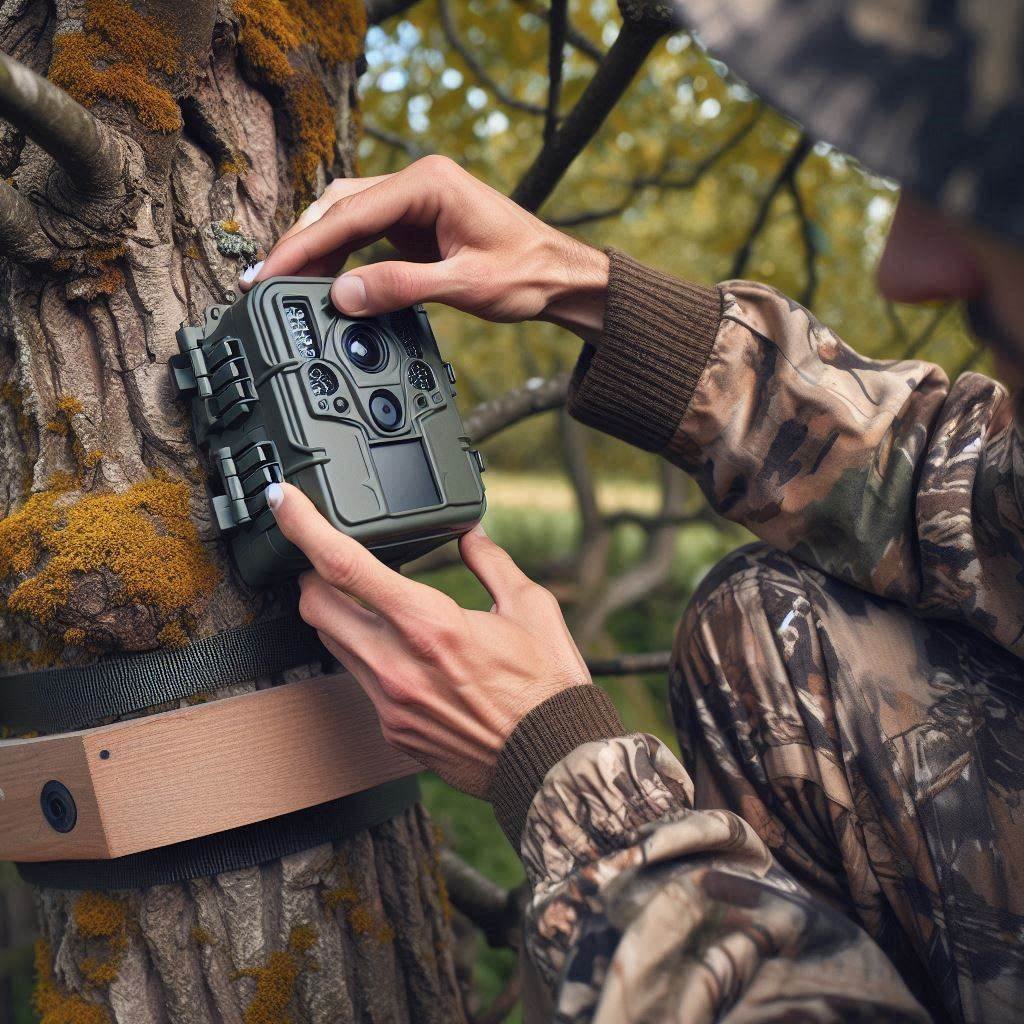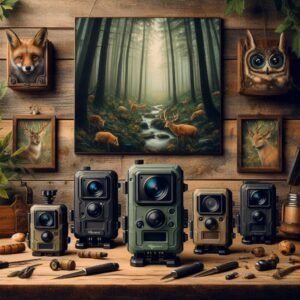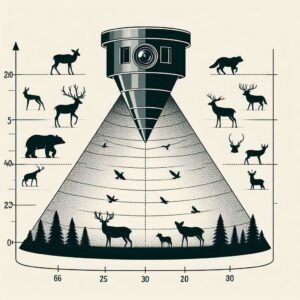Table of Contents
Building a Budget-Friendly Wildlife Camera Setup: The Complete Guide
Capture Stunning Backyard Wildlife Without Breaking the Bank
Discovering the wildlife that visits your property can be an exciting adventure!
Whether you’re spotting deer at dawn, sasquatches raiding your smoker at night, or rare birds stopping by your feeder, a wildlife camera lets you document these magical moments without disturbing nature’s routine.
This latest OTL guide will help you build an affordable wildlife camera setup that delivers professional-quality results without breaking the bank.
We’ll cover everything from choosing the right camera to placement tips and accessories that enhance your wildlife photography experience.
What Makes a Good Wildlife Camera?
Before diving into specific recommendations, let’s understand what features matter most:
- Image quality: Look for cameras with at least 12MP resolution for clear, detailed images
- Trigger speed: Faster is better—under 0.5 seconds ensures you don’t miss quick animals
- Detection range: The distance at which the camera can sense movement (typically 50-100 feet)
- Battery life: Longer battery life means less maintenance, especially in remote locations
- Weather resistance: Essential for outdoor use in varying conditions
- Nighttime capabilities: Most wildlife activity happens at dawn, dusk, or night
Best Budget-Friendly Wildlife Cameras in 2025
Here are a few well-regarded, affordable wildlife camera options commonly found on Amazon that offer great value for their price point per our testing:
1. WOSODA Trail Camera 36MP 1920P
As one of Amazon’s best sellers, this affordable camera delivers impressive 36MP photos and 1920P video with a quick 0.2-second trigger speed.
With 36pcs IR LEDs, it provides clear night vision up to 65ft without disturbing wildlife.
*Pros:*
– Amazon best seller at a budget-price with excellent reviews
– Great value for beginners
– IP66 waterproof rating
– 120° wide detection angle
*Cons:*
– No WiFi connectivity
– Battery life could be better in cold weather
2. GardePro A3S Trail Camera
This popular Amazon choice delivers exceptional value (under $60) with a lightning-fast 0.1-second trigger speed and 64MP resolution.
Its no-glow infrared technology remains invisible to animals while capturing clear nighttime footage up to 100 feet away.
*Pros:*
– Super-fast trigger speed
– Excellent night vision capability
– 100ft detection range
– Easy setup with intuitive menu system
*Cons:*
– Slightly more complex settings for beginners
– Higher power consumption than basic models
3. Bushnell Core DS No-Glow Trail Camera
A trusted name in outdoor equipment, Bushnell’s Core DS camera offers dual sensors for optimized day and night images.
With 30MP resolution, 1080p video, and a 0.2-second trigger, it’s a reliable mid-range option for serious wildlife observation.
*Pros:*
– Dual-sensor technology for superior image quality
– Robust, weather-resistant construction
– Excellent battery life (up to 12 months)
– 100ft night flash range
*Cons:*
– Higher price point
– Larger physical size
4. SPYPOINT Link-Micro-S-LTE Solar Cellular Trail Camera
For those wanting wireless connectivity, this compact camera offers cellular capabilities that send images directly to your smartphone.
The integrated solar panel extends battery life indefinitely in sunny locations, making it perfect for remote monitoring.
*Pros:*
– Cellular connectivity for remote viewing
– Solar-powered battery support
– Compact, low-profile design
– Easy app-based setup and control
*Cons:*
– Requires cellular data plan
– Lower photo resolution (10MP) than non-connected models
5. Stealth Cam G42NG No-Glow (2-pack) Trail Camera
Another Amazon top seller, this camera offers an excellent balance of features and affordability. With 24MP photos, HD video, and a matrix blur reduction system, it ensures clear images of moving wildlife both day and night.
*Pros:*
– Quick 0.5-second trigger speed
– 100ft no-glow IR flash range
– Burst mode captures up to 9 images per trigger
– Durable weather-resistant housing
*Cons:*
– Menu system has a bit steeper learning curve
– No wireless connectivity
Essential Accessories for Your Setup
SD Cards
Invest in high-quality Class 10 SD cards with at least 32GB of storage. SanDisk Extreme or Lexar Professional cards offer reliable performance in outdoor conditions.
Protective Housing
For added security and weather protection, consider a lockable metal housing that shields your camera from extreme elements and potential theft.
External Power Options
For extended deployment, solar panel accessories can keep your camera running indefinitely in sunny locations.
Mounting Equipment
Quality straps, tripods, or tree mounts ensure your new trail camera stays perfectly positioned regardless of weather conditions.
Setting Up Your Backyard Wildlife Camera
Choosing the Perfect Location
The best placement for your backyard wildlife camera depends on what animals you hope to capture:
- Game trails: Position cameras facing along trails rather than across them for longer detection windows
- Water sources: Ponds, streams, or birdbaths are natural gathering spots
- Feeding areas: Near bird feeders, deer food plots, or fallen fruit trees
- Den entrances: If you’ve spotted burrows or tree hollows, these can yield fascinating footage
Optimal Height and Angle
For most medium to large mammals, mount your camera about 3 feet off the ground.
For birds or smaller creatures, consider lower placements or angled setups that capture their activity.
Position your camera facing north or south when possible to avoid direct sunlight washing out your images at dawn or dusk.
Testing and Adjustment
After initial setup, perform a “walk test” by moving in front of the camera at various distances.
Check the resulting images and adjust:
- Height and angle for optimal framing
- Sensitivity settings based on false triggers
- Time-lapse intervals if using this feature
Privacy and Legal Considerations
When placing outdoor cameras, ensure they’re pointed at your property and not capturing neighbors’ activities.
Most states have laws about recording in spaces where people have a reasonable expectation of privacy.
Advanced Tips for Better Wildlife Images
Attracting More Wildlife
- Create brush piles or log structures that provide shelter
- Plant native species that produce berries, nuts, or seeds
- Install bird or bat houses near (but not directly in front of) your camera
- Consider a simple water feature that attracts diverse species

Camera Settings for Different Conditions
Daytime Settings
- Use the highest image quality setting
- Set to multi-shot mode (2-3 images per trigger)
- Lower sensitivity slightly to avoid false triggers from moving vegetation
Nighttime Settings
- Optimize for faster trigger speed over image quality
- Use video mode sparingly as it consumes more battery
- Increase IR flash range for distant subjects
Seasonal Adjustments
- Spring/Summer: Adjust for fast-growing vegetation that can trigger false alarms
- Fall: Position to capture migration patterns or feeding frenzies
- Winter: Lower camera height to account for snow accumulation
Wildlife Camera FAQ
How much does a good wildlife camera cost?
A quality entry-level wildlife camera costs between $40-80, while mid-range models with advanced features typically range from $80-150.
With proper research, you can find excellent performance even at the lower end of this range.
Do wildlife cameras work at night?
Yes! Most wildlife cameras use infrared technology to capture clear black-and-white images at night without using visible flash that would startle animals.
The quality of night images varies by model, with more expensive cameras typically producing clearer nighttime shots at greater distances.
How long do batteries last in a wildlife camera?
Battery life varies dramatically based on usage, but most quality cameras can last 3-6 months on a set of AA batteries with typical settings.
Cameras with WiFi features tend to drain batteries faster. For extended use, consider models compatible with external power sources or solar panels.
Are wildlife cameras waterproof?
Most wildlife cameras are weather-resistant rather than fully waterproof. They can withstand rain, snow, and moderate weather conditions but shouldn’t be submerged.
Look for IP65 or higher ratings for maximum protection against the elements.
Can I view wildlife camera images on my phone?
Some models offer WiFi connectivity that allows viewing images directly on your smartphone through a dedicated app.
The Spypoint trail cam mentioned above is a budget-friendly option with this feature. Alternatively, some cameras support cellular data transmission for remote viewing, though these typically cost more and require a data plan.
Will animals notice the camera?
Modern wildlife cameras are designed to be minimally intrusive.
They use camouflage patterns to blend into surroundings and employ no-glow or low-glow infrared technology that remains invisible or nearly invisible to most animals.
After initial installation, most wildlife quickly becomes accustomed to the camera’s presence.
How far can a wildlife camera detect movement?
Detection ranges vary by model, typically between 50-120 feet.
Budget models often detect reliably at 50-65 feet, while mid-range options can reach 80-100 feet or more.
Remember that detection range and image clarity at distance are two different specifications.
Do I need special equipment to view the images?
For most wildlife cameras, you simply remove the SD card and insert it into a computer or card reader to view your images.
WiFi-enabled models allow viewing directly on smartphones or tablets via specialized apps. No professional equipment is needed.
Bottom Line
Setting up a backyard wildlife camera offers a fascinating window into the natural world that surrounds us every day.
With options available at nearly every price point, you don’t need to spend a fortune to capture amazing wildlife moments.
The models recommended in this guide provide excellent starting points based on your specific needs and budget.
Keep in mind that patience is key—some of the most rewarding wildlife photography happens after your camera has been in place for several weeks, allowing animals to become comfortable with its presence.
Disclaimer
This guide is produced by Outdoor Tech Lab for informational purposes only. Product recommendations are based on market research and user reviews as of May 2025.
All opinions remain objective and unbiased.
Resources:
U.S. Fish & Wildlife Service: [https://www.fws.gov/library/wildlife-watching]
– National Park Service Wildlife Viewing Guidelines: [https://www.nps.gov/subjects/watchingwildlife/index.htm]
– USDA Forest Service Wildlife Program: [https://www.fs.usda.gov/science-technology/fish-wildlife-plants/wildlife-program]

Introducing JC – The Outdoor Gear Enthusiast and Tester behind Outdoor Tech Lab:
Dive into the exciting world of outdoor gear technology with JC, the founder and driving force behind Outdoor Tech Lab.
With a passion for backpacking, nature and a knack for outdoor gadgets, JC has embarked on a mission to help others explore the outdoors in smarter, safer, and more enjoyable ways.
Join us on the adventure as we explore the ever-evolving landscape of outdoor gear & technology.
Through insightful reviews, practical tips, testing and engaging stories, Outdoor Tech Lab is your one-stop shop for navigating the wild world of outdoor gadgets and gear in 2025 and beyond.







